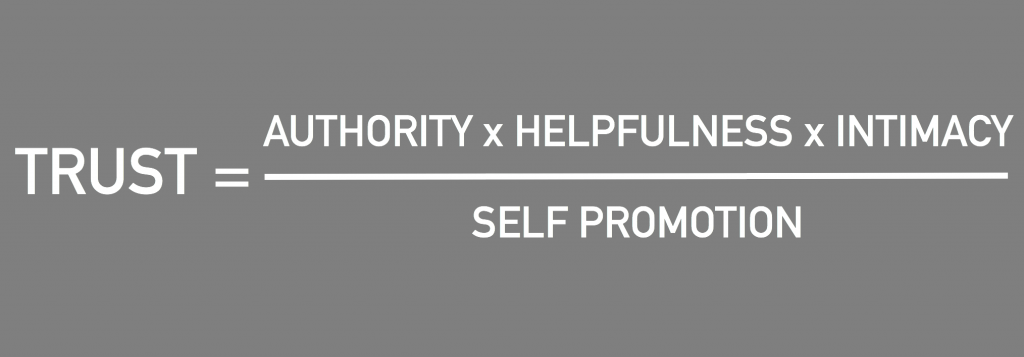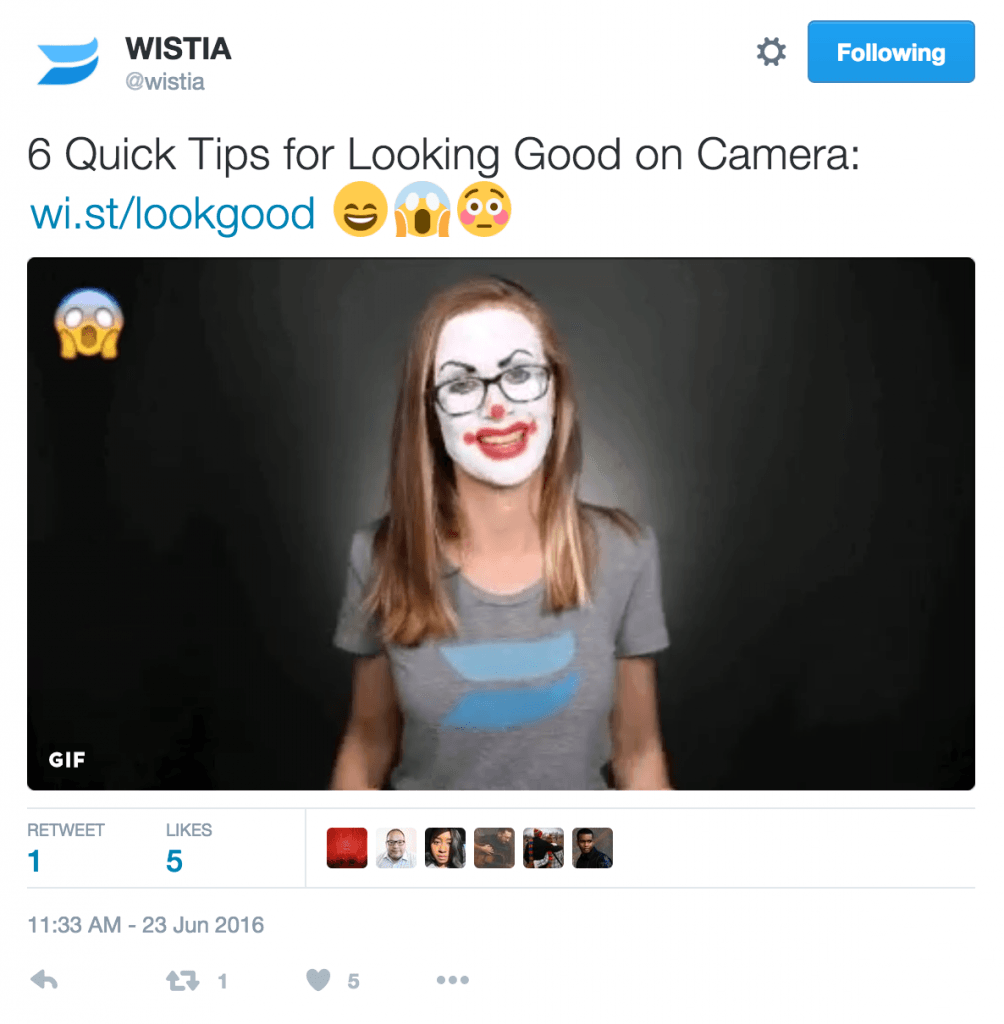How to Use Social Media to Build Brand Trust

Social media is more than just a platform to promote your products, services, and content. It’s a two-way street for communication that can engage your customers and prospects. These interactions help build brand trust and a form a community around your brand. You need trust to create a deeper relationship with your customers and to encourage repeat purchases and referrals.
So, how do you use social media to build brand trust? What goes into building this trust? Steve Rayson, director of BuzzSumo, describes the social media trust formula as:

Breaking Down the Trust Formula
Let’s break down this formula and clearly define each metric.Authority
People are likely to trust authorities or experts in a certain industry or on a particular topic. The quality of the content you share and produce, as well as the advice you share when joining conversations, shapes your authority. To maintain your authority, you need to keep up with the latest research and news in your industry, and frequently share your insights.Helpfulness
Social media is a platform for a community of people, and they are more likely to trust those who are helpful than those who are not. Being helpful means commenting and answering questions. It also means sharing helpful content from a wide array of sources, not just your own.Intimacy
Intimacy involves engaging with people and showing your brand personality. People trust who they know, so it’s important to show that there are humans behind your brand. It’s not a “company” that’s tweeting or posting on Facebook—it’s people that are doing it!Self-promotion
Each time you post an article or a link that promotes one of your products, services, or articles, you’re being self-promotional. If everything you’re sharing on social is about you, then your trust with your followers will decline.Now let’s cover how to build your authority, helpfulness, and intimacy, and how to do self-promotion the right way.
Be an Authority
Be an authority by being a part of the conversation. That means monitoring the latest happenings in your industry and sharing your insights and opinions.Join Conversations
To be an authoritative commentator, you can’t just be responsive to questions, but you must be proactive about joining them too. Find conversations about your industry and offer your insights. Share your opinions, and provide helpful articles.To find conversations to join, monitor keywords and hashtags, as well as discussions, such as those occurring in LinkedIn groups. Look at your Google Analytics account and see what keyword searches people are performing before they end up on your site. Monitor those keywords on social—chances are, people are talking about it on their social channels, too.
Find Content to Share
An authority is a go-to resource for everything happening in an industry. Be that go-to resource. Share helpful articles about all of the latest news and happenings in your realm. Here are some places to find great content to share:- RSS blog feeds: Actively follow what your partners, competitors, and others in the industry are sharing, so you can stay on top of the latest news, and share your findings.
- Hashtags and keywords: Follow keywords and hashtags that are relevant to your industry. You’ll be able to see what others are sharing that relates to those topics.
- Buzzsumo: With Buzzsumo, you can search by topic and see what type of content is most shared on that topic.

Produce Great Content
Part of being an authority in your space requires that you also create your own helpful content. By monitoring hashtags and keywords, you can see what questions are asked frequently, as well as what topics are most popular. Use those as content inspiration.When it comes time to writing, a few of my favorite resources are Convince & Convert’s Content Marketing blog, Ann Handley, and the Content Marketing Institute.
Be Helpful
To create the helpfulness part of your trust score, you should be responding to almost every tweet about you.Monitor and Offer Support
In order to respond to people, you need to actively monitor your social media platforms for mentions. In addition, monitor for the name of your company, products, services, and URLs, too. Over 30 percent of tweets don’t include a Twitter handle when mentioning a company, so you’ll miss out on a lot of conversations if you’re only monitoring your handle.Tools like Sprout Social, Mention, and Hootsuite are great for monitoring all of the different variations of your handle.
Redirect to Appropriate Channels
While you should answer all questions you can on social, it’s not possible all the time. Not everything can be solved in 140 characters or less, and oftentimes, those that are handling your social media account may not be very technical or aware of issues with your tool. That’s okay—direct people to a more appropriate channel like a customer support email address or phone number.
You’re still being helpful by redirecting them to a platform where they’ll get their question answered quickly and efficiently.
Respond Quickly
When you’re responding to questions, do it quickly. 65 percent of social consumers expect a response in under two hours on Twitter. The reality is that only 20 percent of brands are responding within that timeframe. And when you don’t meet your followers’ expectations, negative actions can occur. 60 percent of consumers say they will take a negative action if they don’t receive a timely response on social, including buying less, complaining on social, and telling their family and friends about it.Conversely, when you respond quickly and meet your followers’ expectations, there are many positive benefits that can occur, including: 47 percent will recommend you on social, 43 percent will encourage others to buy from you, and 34 percent will buy more from you. So when you respond, do it quickly!
Set Response Expectations
Unless you’re a global brand with a whole team dedicated to social media, it’s not realistic that you’re online and able to monitor social media at all hours of the day. And that’s okay! But if this is the case, it’s necessary to set expectations with your followers.Do not post on social media during times of the day when you’re not able to respond. This sets the wrong expectations. It’s like seeing a store with a bright neon sign that says “OPEN,” but when you get to the door, it’s locked—you see what they’re putting out there, but you can’t interact with them at all. Only promote content on social when you’re online.
Build Intimate Relationships
The key to building intimacy with your followers is showing that you’re human. People want to interact with other people, not companies.Show There Are People Behind Your Brand
Your followers aren’t interacting with robots on social media—they’re interacting with people. Show them this. This helps them identify with your brand and build relationships.FedEx does a great job of this. In this example, Chalisse clearly identifies herself as the person Lyric is interacting with. She’s helpful and friendly, which helps build brand trust. Lyric is likely to reach out on Twitter again if she has another issue because she knows they’ll be responsive.

At Litmus, we do something very similar on Twitter to show that there are actual people behind the @litmusapp handle. We include the headshots, names, and departments of everyone who tweets in our Twitter header image.

When interacting with followers, we use our initials that are clearly identified in the header to sign our tweets.

This helps our followers know exactly who they’re interacting with—and they even respond to tweets with our names in their response!

Admit When You Mess Up
Part of being human is making mistakes, and with the fast nature of social media, mistakes are bound to happen. That’s okay! Own up to it. It’ll make you more relatable. In this example, I sent out a tweet that was riddled with errors (oops!):
Immediately, an influx of tweets came in, pointing out my errors.

Rather than deleting the tweet and starting over, I acknowledged the issue—and even poked fun at myself:

This was a simple mistake that didn’t offend anyone, so it was appropriate to handle this issue with humor and admit my mistakes. It shows that I’m a human!
However, for brands that make big, offensive mistakes, bigger actions should be taken—for example, deleting the post, responding to anyone that was offended, issuing an apology, and maybe even reaching out to your PR or legal teams.
Show Your Brand Personality
Part of acting like a human and building that intimacy is showing your brand personality. This is a great example of brand personality from the folks at HelpScout:
Not only does HelpScout they show their playfulness and brand personality by giving a fist bump and including a fun emoji, but they really personalized the tweet. They went into Keir’s help ticket and found the support person who Keir interacted with, and included her name in the response. Talk about adding a human element to the response!
Answer Questions and Join Conversations
Prove that you’re human. Answer questions, join conversations, and share your insights. It’s the people behind the companies that are helpful and actionable, not the companies themselves.Self-Promote, the Right Way
While building a community and brand trust is a major advantage of social media, it’s also a great medium for promoting your content, products, and services. You just have to do it the right way.For starters, the majority of your tweets should be building up your trust score—being an authoritative commentator, being helpful, and creating that intimacy. (highlight to tweet) Looking at your social feed is a great way to see how self-promotional you’re being. Are the majority of your tweets promoting your own content or products? Or are you interacting with followers and sharing third-party articles?
When it’s time to be self-promotional, do it wisely. Don’t be overly salesy or pushy. Be valuable and show your brand personality by using positive language. This is a great example from Wistia of self-promoting the right way:

While they’re promoting their own content, they make it fun. They include a quirky animated GIF or emojis to show their playfulness. In addition, rather than saying “New post! Check it out!,” the tweet clearly states the benefit the follower will receive by reading the post—how to look great on camera.
What it all boils down to is being human. Start and join conversations, offer insights and opinions, share useful content, and be relatable. All of these aspects work together to create an active, engaged social audience—and will help build your brand trust.
Get more content like this, plus the very BEST marketing education, totally free. Get our Definitive email newsletter.
Comments
Post a Comment